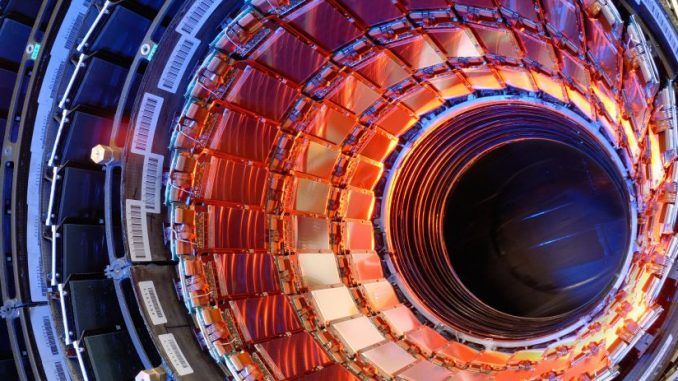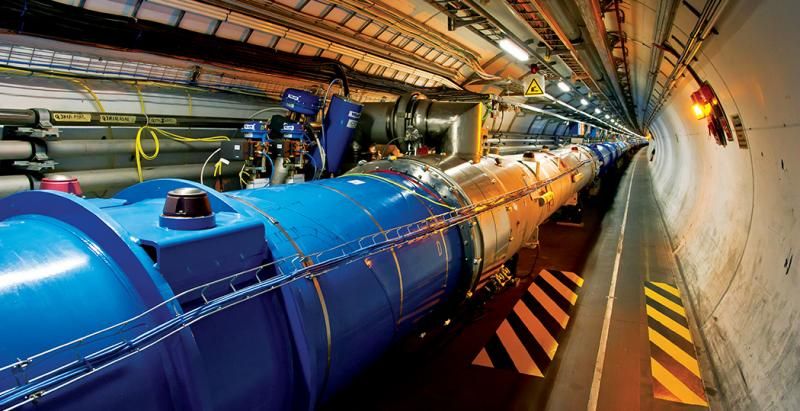
There has been excitement at CERN (The European Organization for Nuclear Research) after scientists discovered brief flashes of light inside the LHC (Large Hadron Collider).
Physicists and engineers are fascinated by hints of the discovery of a new particle that defies scientific theories and are fascinated at the prospect of more discoveries to fit their models and help probe the fundamental structure of the universe, 90% of which remains unexplained.
According to scientists the new particle might be the ‘cousin’ of the Higgs Boson, the big discovery which made some of the present theories of physics and cosmology more presentable, and allowed room for more discoveries in the field of the 10% structure of the universe (that we are aware of) to define the 90% (of the unknown).

BYPASS THE CENSORS
Sign up to get unfiltered news delivered straight to your inbox.
You can unsubscribe any time. By subscribing you agree to our Terms of Use
The Elite/Established scientific community could be trying to rule the universe, and are using distraction tactics (flashes of light deep underground in gigantic structures that defy 90% laws of the universe) to further their agendas.
The Guardian reports:
When hundreds of physicists gathered this week in La Thuile, an old mining town in the heart of the Italian alps, one short and simple question hung in the cool, crisp air: is it real?
The source of their fascination, and no little excitement, was light. Not the sunlight that made the snow glint on the mountains in the Aosta valley, but light inside the Large Hadron Collider (LHC) across the border near Geneva. The machine had detected more photons than expected as it smashed particles beneath the quiet Swiss countryside. The brief flashes of light might be the first glimpse of the next big discovery.
Or it may be nothing. The LHC hunts for signs of new physics by slamming particles together and capturing the debris in giant detectors. It is a world where quantum weirdness rules, and random blips in the data are a daily nuisance. But what if this latest bump in the data has solid foundations? Enter a new era of physics, and a world of hitherto unknown particles and forces.
Speculation is rife. Some physicists suspect that the blip may be a heavier cousin of the Higgs boson, the mass-giving particle the LHC discovered in 2012. Alternatively, it could mean the Higgs itself is made up of a bunch of smaller particles. Others wonder if the bump might be a graviton, a particle that transmits gravity. That would be truly remarkable: so far, gravity has proved impossible to reconcile with theories of other particles and forces.
“If this thing turns out to be real, it’s a ten on the Richter scale of particle physics,” says John Ellis, professor of physics at King’s College London, and the former head of theory at Cern. “One’s excitometer gets totally broken.” That if, though, is a big one.
“I would love for it to persist, but I’ve seen so many effects come and go that I have to say in my heart of hearts I’m not very optimistic. It would be such a fantastic discovery if it were true, precisely because it’s unexpected, and because it would be the tip of an iceberg of new forms of matter,” Ellis says.
Read more: www.theguardian.com/science/excitement-grows-over-large-hadron-colliders-possible-new-particle-lhc?


